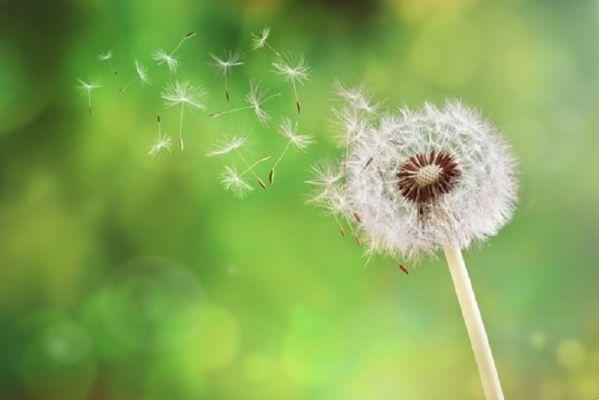
Tasassaco, when to take it and how to consume it
Il dandelion (Taraxacum officinale), also known as dandelion, dandelion and piscialletto, is a perennial and spontaneous herb common in our meadows.
The dandelion belongs to the Asteraceae or Compositae family and is characterized by deeply engraved leaves collected in a basal rosette, solitary yellow flower heads and fruits that develop with the formation of the characteristic shower head.
The dandelion plant is used in cooking and in phytotherapy: raw or cooked leaves and roots are consumed for food. infusion, while the drug used in phytotherapy consists of the aerial part of the plant and the root.
The dandelion root is particularly rich in inulin, fructose e potassium, while the leaves are characterized by the presence of bitter substances, sesquiterpene lactones and flavonoids.
The dandelion is mainly used for its diuretic properties, cholagogues and choleretics but also possesses hypoglycemic action.
Although it is not a plant used as a first choice in case of an increase in blood sugar, the use of dandelion in diabetes it could help maintain adequate blood glucose levels.
Il dandelion can be taken in the form of an infusion or extract liquid (mother tincture or non-alcoholic solution) or dry, in capsules or tablets.
Dandelion is a safe drug but it is contraindicated in case of biliary obstructions and in subjects allergic to Asteraceae.
What is diabetes mellitus
Il diabetes mellitus is a chronic disease characterized by an increase in blood glucose. Glucose comes from food and is the main source of energy for the body.
After meals you have a normal increase in blood glucose which must be transported to the tissues in order to be used for energy purposes.
To make it possible for the organs to use glucose, the pancreas secretes it after meals insulin, a hormone that allows the body's cells to take glucose from the bloodstream, thus lowering blood sugar.
In diabetic people, blood sugar is not brought back to normal levels because there is no production of insulin or why the tissues are resistant to insulin.
In particular, in the type 1 diabetes mellitus there is no production of insulin: it is an autoimmune disease that causes the destruction of the cells of the pancreas responsible for the production of insulin.
Type 1 diabetes appears at a young age and is treated by administering insulin after meals.
Then there is the 2 type diabetes, which generally affects older people, often overweight. In type 2 diabetes insulin is produced in an adequate way but the tissues are "resistant to insulin", so the transport of glucose into the cells is not effective.
We therefore have a increase in blood sugar both after meals and away from meals and this determines over time the onset of numerous diseases including retinopathy, renal failure and vascular diseases.
Diabetes mellitus, natural remedies
Il type 2 diabetes mellitus it is treated through diet correction, with antidiabetic drugs and, in some cases, with insulin.
There are several plants traditionally used in case of diabetes. Among these we find: Opuntia (Opuntia streptacantha) ad hypoglycemic action; Gimnema (Gymnema sylvestre) and American Ginseng (Panax quinquefolius) which reduce the absorption of glucose, increase the production of insulin and increase the uptake of glucose by the tissues; the bitter melon (Momordica charantia), which increases insulin secretion and glucose absorption by the cells.
La decrease in blood sugar it was also detected following the intake of coccinia (Coccinia indica), sacred basil, milk thistle and fenugreek.
All these plants can also be associated with the dandelion which, although not the drug of choice for the treatment of hyperglycemia, may help in normalizing blood glucose levels.


























